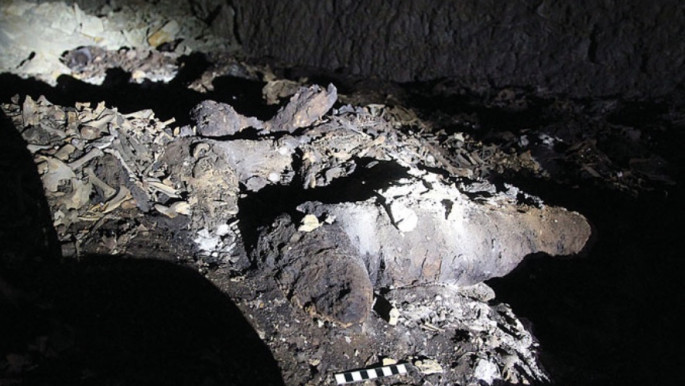
The curse of King Mutt: Dog-mummy tomb reveals secrets
The curse of King Mutt: Dog-mummy tomb reveals secrets
Blog: Researchers are studying a millennia-old catacomb that once held about eight million animal mummies in a vast necropolis 30km south of Cairo.
2 min read
As many as eight million dogs and other animals were buried in the tomb [Getty]
An ancient Egyptian mass graveyard once contained up to eight million mummified corpses of dogs, jackals and other animals, a report in the journal Antiquity has revealed.
The study, published this month, focused on the catacombs of devoted to the god Anubis at Saqqara in Egypt, a complex of underground tunnels that once held millions of mummified animals, mostly dogs and puppies.
Researcher Paul Nicholson of Cardiff University led the study of the canine crypt, estimated to have been dug sometime in the 4th century BC. Archeologists have found the remains of millions of dogs and jackals, many of which appear to have been only hours or days old when they were killed and mummified.
 |
|
|
Mummified dog corpses in an undisturbed section of the catacomb [Antiquity Trust] |
The prehistoric pooches were likely bred by the thousand in puppy farms to be mummified and sold to pilgrims who would offer them to particular gods, in this case Anubis - the jackal-headed deity of mummification and the afterlife in the ancient Egyptian religion.
Many of the mummies have since disintegrated or been taken by grave robbers and industrialists, who have used the corpses for crop fertiliser.
The catacombs (dog-acombs?) are part of Saqqara, the burial ground of the ancient Egyptian capital, Memphis. The necropolis also includes the world famous stepped pyramid of Djoser, considered to be the earliest large-scale cut-stone construction.
The site was first mapped by French Egyptologist Jacques De Morgan in 1897 but the exact date and circumstances of their original discovery are unknown.
Apart from to use as offerings, the ancient Egyptians mummified animals to allow their beloved pets to go on to the afterlife with them, and to provide food in the afterlife.
Many different animal corpses were preserved including, cats, ibises, baboons, crocodiles, fish, bulls and mongooses.
In May, a BBC documentary revealed a third of animal mummies X-rayed in a study contained only partial remains or were completely empty, likely because ancient embalmers wanted to make more profit by selling "fake" mummies to pilgrims.



